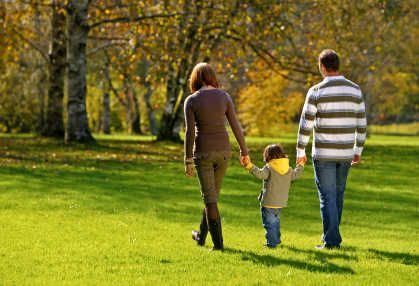Weight is never an easy subject, but it can be especially dicey when parents broach the issue of eating habits and weight with their teens.
“No girl ever lost weight because her mother told her she was fat,” a friend advised me when I was fretting about my teen’s size.
It turns out she was right, according to a study by University of Minnesota researchers appearing in JAMA Pediatrics. Based on a large sample of teens and parents, the scientists found that kids whose parents talked to them about eating by focusing on the children’s weight or size — telling them either that they were heavy or could get fat if they continued to eat the way they did — were more likely to adopt unhealthy heating behaviors such as going on extreme diets, fasting or using laxatives, or pick up eating disorders like binge eating. But kids whose parents focused only on how to eat healthy and avoided judgmental statements about their weight were less likely to have eating problems. And overweight kids whose moms talked to them about healthy eating had far fewer problems than those whose mothers did not discuss eating in a healthy way.
Around 60% of mothers and fathers with overweight teens talked to their children about their weight, but only 40% of the adolescents who had conversations centered around healthy eating turned to unhealthy eating behaviors compared to 64% of those whose parents focused on their weight. The effect was especially strong when fathers were involved in these discussions with their daughters, and concentrated on weight as opposed to talking about healthy eating in general. “Dads should never comment on girls’ or daughters’ bodies,” says Mary Jo Rapini, co-author of “Start Talking: A Girl’s Guide for You and Your Mom about Health, Sex, or Whatever…” Instead, she suggests, fathers should concentrate on their daughters’ skills or interests, and that can help them “feel loved by their dad and confident enough to work on their body issues,” she says.
According to the study’s lead author Jerica Berge, the results should be an eye-opener for both parents and doctors, who are often asked by worried moms and dads, “How do I talk to my kid about weight or eating behaviors?”
The answer, she says, is to avoid bringing attention to how your child looks or how much they weigh; instead, talk to them about being healthy and don’t compare them to others or to an ideal, reference weight. “It should never be about how they look because we all come in different shapes and sizes,” says Dr. Dyan Hes, a New York City pediatrician and obesity expert who was not involved in the study.
That’s easier said than done, however, since such approaches could lead children, especially teens, to tune out.
“Frame it in a way that gets them excited,” says Laura Williams, an exercise specialist and founder of GirlsGoneSporty.com. “Want to climb the highest peak in the state? Then we need to start training and eat the right fuel — more fruits and vegetables, lean proteins and whole grains.”
Giving adolescents an immediate goal, or reason to improve their eating habits, can be an important motivator, says Lisa Gatti, nutrition counselor and founder of culinarytherapyonline.com. If they care about grades, she says, “speak to how eating healthy foods will help to think more clearly and say focused.” The same strategy may work if your teen is a runner or plays sports — eating nutritious meals can help them perform better on the field.
It’s all about presenting the importance of eating well and being healthy in terms that are relevant to a teen’s own needs and interests. And, say experts, it’s helpful for them to understand that whatever they decide to eat, and the consequences of those decisions, are under their control. Lectures on what they are doing wrong, and forcing them to change how they eat “because it’s good for them” may backfire and drive them to pick up even unhealthier habits. “Nobody likes to be controlled,” says Nancy Anderson Dolan, clinical director of WiseHeart Wellness. “Everybody likes to be understood and assisted.”
Such conversations are certainly tricky, and the latest results suggest the stakes are higher than parents might have thought. Given that the study found a slightly greater effect on changing children’s eating habits when fathers were involved in the discussions, Berge says ideally both parents should share the responsibility. But that’s only if—and this is a big if— both mom and dad can really focus on healthy eating and not be judgmental about size. If that’s not possible, says Dr. Elizabeth Lombardo, a clinical psychologist, physical therapist and the author of “A Happy You,” “Choose the parent whose interactions evoke the least amount of stress and who demonstrates healthy eating themselves.”
Experts also say weight conversations should not be any one child’s domain. A healthy lifestyle — that includes a nutritious diet and plenty of regular exercise for everyone — should be a family undertaking. One effective way of improving teens’ eating habits is to shop and cook with them, and organize family outings that keep them physically active.
Above all, set a good example. If you want a child who eats right and exercises, do it yourself. Children learn most from watching what you do, not what you say. My overweight mom, for example, never let me have more than one cookie— so I wouldn’t get “fat.” But I knew where she hid her chocolate bars, and I sneaked them from her stash. Mom is gone, but the legacy of those forbidden sweets still makes losing weight a challenge. “Parents must look in the mirror first,” says Dolan “and deal with their own issues, both about weight prejudice and health habits.” That can go a long way toward making conversations about healthy eating with their own children more productive.
http://healthland.time.com/2013/06/25/how-to-talk-to-your-kids-about-their-eating-habits-very-carefully/



